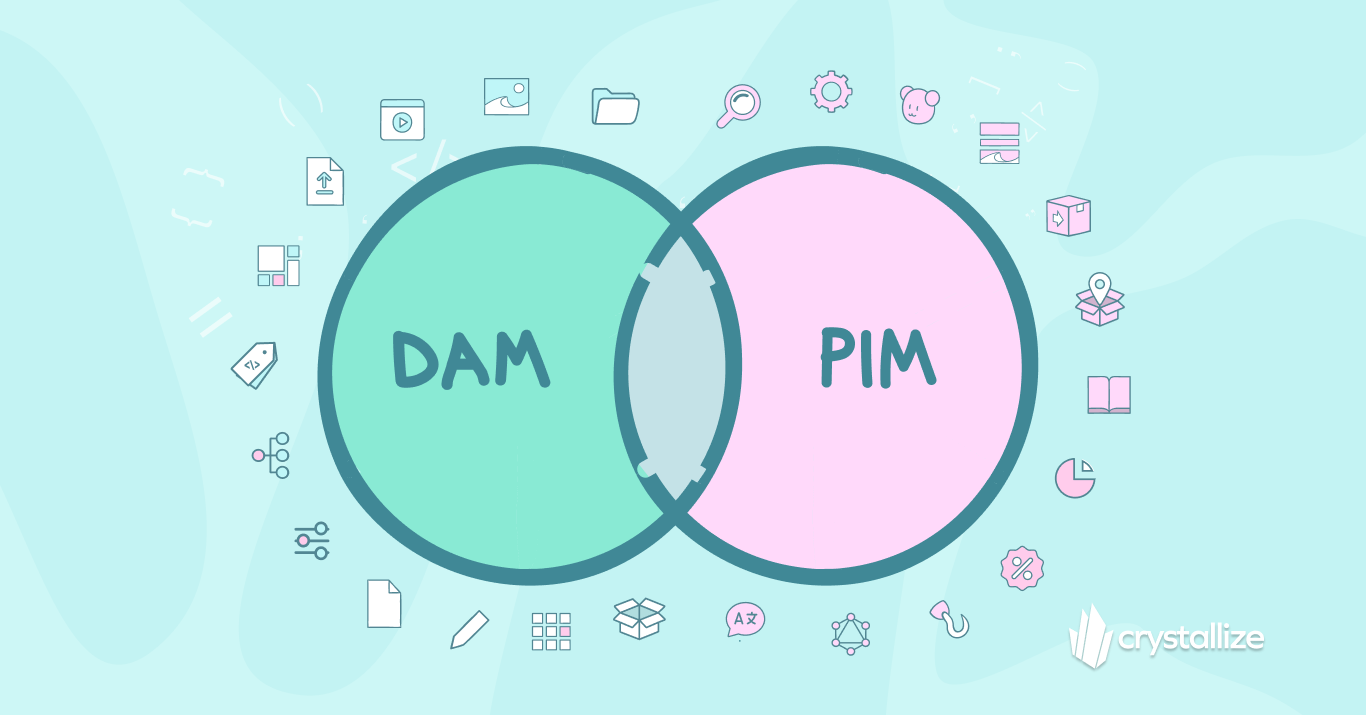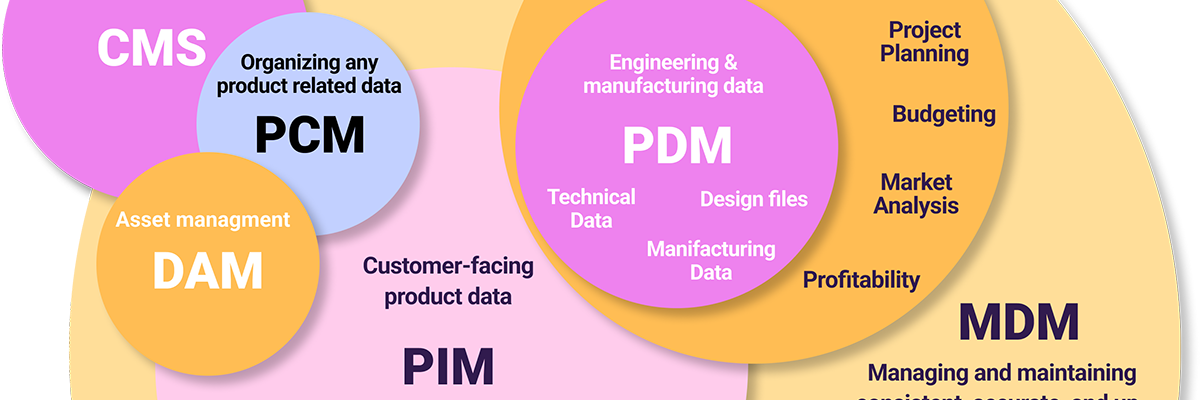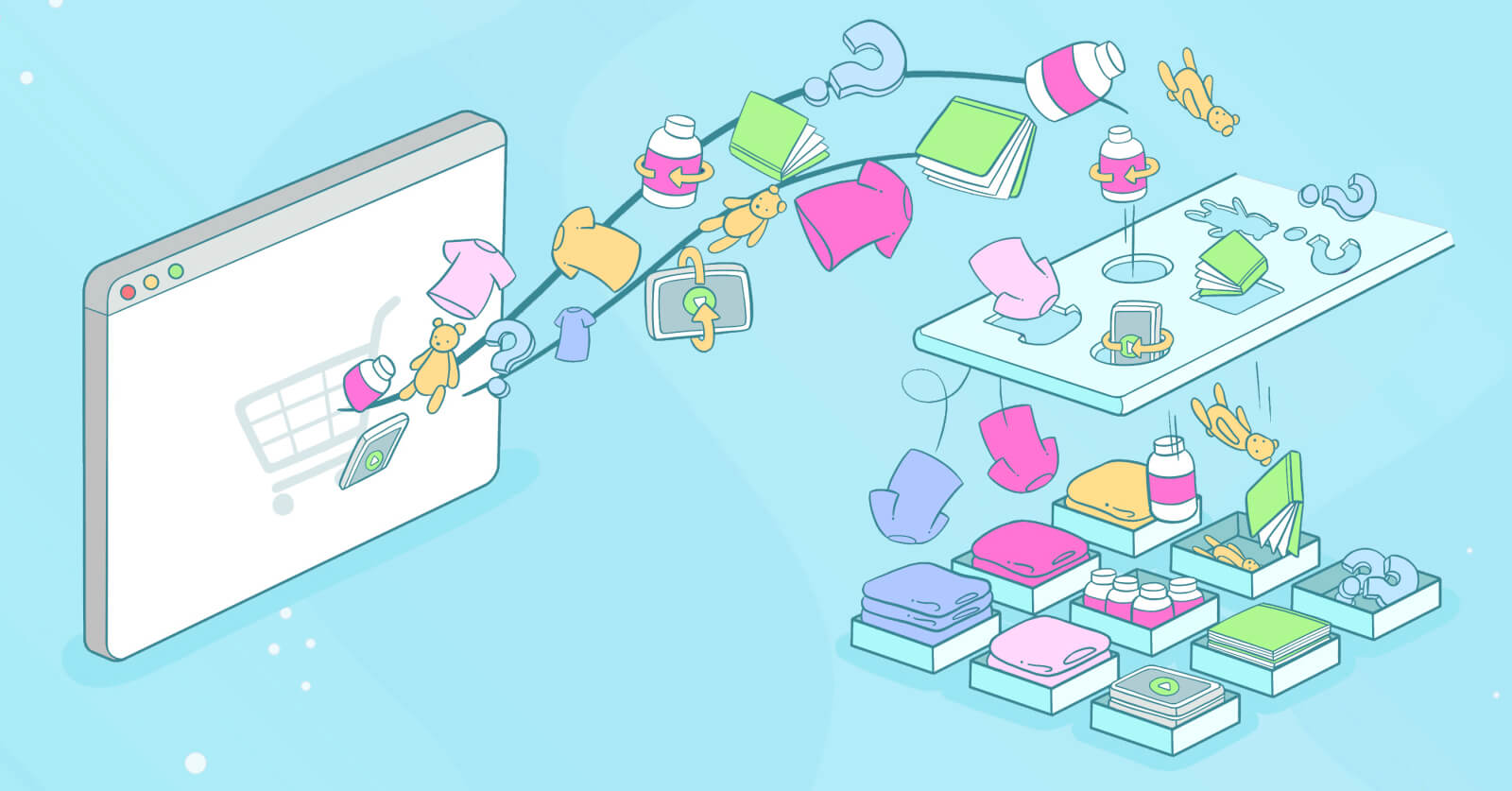PIM vs. DAM: What's the Difference?
We just scratched the surface by explaining product information management (PIM) and digital asset management (DAM). Time to compare these two concepts and systems and describe the business benefits of using them.

It’s the age of omnichannel. As an eCommerce business, you’re probably using your website, social media, email communication, social media, social selling, video platforms, and much more.
How much time have you spent trying to distribute product information or digital assets across these channels? How many times did it happen that you forgot to update product information on one or more platforms? How many times have you lost customers due to these inconsistencies?
That’s where PIM and DAM enter the picture. The gist is they present centralized systems for your product information and digital assets management, in which company files are easily kept updated and easily distributed across all relevant parties within your company, as well as external channels.
And if you’re having trouble differentiating these two or have heard people use them as synonyms, you’re not completely wrong since they’re pretty similar and even somewhat overlap.
So, let’s clear that up.
What Is a Product Information Management (PIM) Solution?
Product Information Management or PIM is a solution that enables companies to manage, maintain, and distribute product information. And which information precisely?
Think of anything you’d find on a product sheet -- and more. Technical information, SKU data, marketing assets, descriptions, labeling, categorization, ingredients, dimensions, sizes, size guides, packaging, colors, etc.
We already talked extensively about what is PIM 👈here. PIM keeps all this data in one centralized location from which it feeds everyone in the company: all the stakeholders, teams, and sales channels. And by implementing a PIM, a company makes sure to keep all information up-to-date, consistent, and accurate.
What Is a Digital Asset Management (DAM) Solution?
Digital Asset Management, or DAM, is a solution that enables companies to manage, maintain, and distribute digital assets.
So, similarly to PIM, it also centralizes, but instead of product information, it consolidates digital assets. And what would digital assets be exactly?
Documents, images, presentations, promotional and branded material, videos, etc. While these can be tied to specific products, they could also be general company digital assets.
DAM platform has varying degrees of user access where stakeholders can find the digital assets they need. It includes automated maintenance of expiration dates and licensing information, automatic delivery of the assets and future updates, and collaboration tools for approvals or removals, ensuring no important information gets lost in the various communication channels.
Its purpose is to unify the digital assets so that brand consistency is kept up to standard and so that the employees have an easier time finding, managing, and using these materials.
PIM vs. DAM
Hey, didn’t you say that a PIM can host marketing assets, too? Is there a difference? Well, both solutions have been developed on the same premise: centralization of files/assets to better organization, communication, and workflows in businesses.
However, there are two subtle differences in the type of data they host:
- PIM was designed to host information directly related to the product, such as pricing, product specification, and more, and
- DAM was designed to host digital assets such as images, presentations, various documents, audio, and video files.
Now, because today there is no product without images or even videos, you’ll find many PIMs that support basic DAM functions for storing digital assets. With this in mind, it is safe to say DAM can be seen as a subset of PIM.
However, because not all PIM systems support storing digital assets, you can use both a PIM and a DAM together, so long as you stay strict about the exact process.
💡Crystallize as both PIM and DAM
PIM in Crystallize is extensively used to manage the product lifecycle, starting with adding a new product and product story, over managing price, stock, and orders until the moment the product reaches its new owner.
Now, having the DAM feature within PIM allows for a product information layer dreams are made of. That’s what Crystallize offers.
It acts as a single source of truth that allows you to craft unique and memorable product experiences for your customers with product information and assets stored in a single source of truth. Once an asset is uploaded, it can be easily used in multiple locations, like product pages, articles, and/or documents.
Crystallize has DAM integrated alongside its product information and content management system (CMS) capabilities making it a unique product on the market right now.
When to Use PIM?
Not every company will need a PIM, but the vast majority will -- depending on their industry of course.
Companies that deal with retail or manufacturing or sell hundreds/thousands of products will have a tough time operating without a PIM. They have to keep track of the plethora of products and related information, stock, specs, prices, discounts, and more, all of which would otherwise result in brand inconsistency and lost sales, in addition to time spent by employees trying to stay in the loop with the changing information and release it to the public.
In such cases, the PIM is your savior that enables efficient operations within your company and helps increase your revenue through efficient selling.
When to Use DAM?
While many PIM systems today come with some DAM functionalities, no PIM will compare to a DAM and vice-versa -- it’s as simple as that.
You will thrive with a DAM system if you’re a company that heavily focuses on digital content production and distribution to various audiences. And not only storing videos -- enabling streaming, archiving, video transcoding, and tracking the updates and different versions of various digital assets are all irreplaceable features of digital asset management systems.
Any content-first company with very few products will most likely require a DAM before they ever require a PIM.
📑Managing Product Data and Tools You May Need Infographic.
What is PIM, and how different is it from DAM? Where do PCM and CMS overlap? And do you need DAM for your business use case? We’ve tried to clear up the acronym confusion in eCommerce with the following infographic that provides you with a visual comparison of all relevant terms. Individual posts dig deeper into each term and the concept behind it.
📝READ WHAT IS PIM AND DOWNLOAD THE INFOGRAPHIC FOR FREE FROM HERE

When to Use Both?
If your budget allows it, we suggest you use both. Most PIM and DAM solutions today enable easy integrations with each other and other systems your company currently uses, such as the CRM, CMS, etc., via APIs.
Or opt out for something like Crystallize.
PIM and DAM in Crystallize are designed to supplement each other. We can manage all our assets from a single place - DAM and use them across all our products and articles in PIM. This way, we can ensure that the same asset is used across different channels with the metadata we add just once. PIM + DAM makes Crystallize the perfect choice for having a single platform to manage all various aspects of a product.
The best you can do is to write down your needs, look for solutions that fill out these requirements, whether a PIM only, DAM only, or the two in combination, and create a list of potential solutions. Finally, sit down with your tech team and narrow the list down to the solution that can easily integrate with the tech stack you’re currently using.
Not sure if you need a PIM or DAM solution? Don't worry. We got you covered.
Seriously, schedule a personal 1-on-1 Crystallize demo, tailor-made to your use case, to understand the ins and outs of both approaches.
Alternativly, why not SIGN UP for FREE and take Crystallize for a spin and get the unparallel level of support from our team to help you get going.

